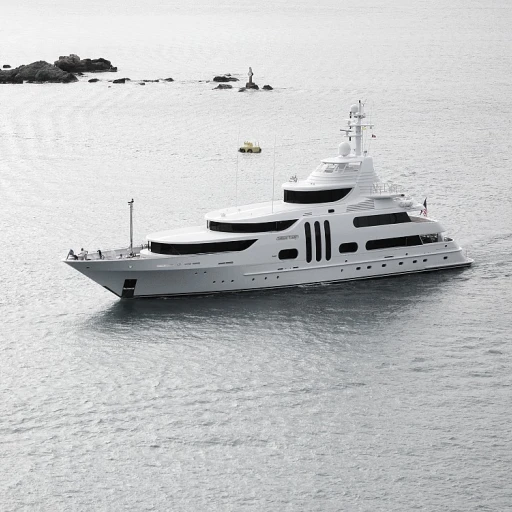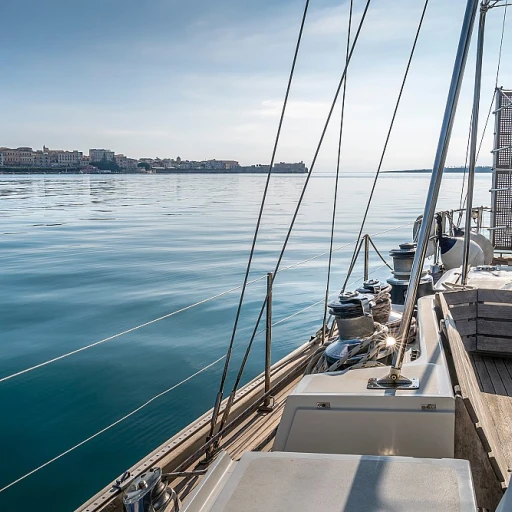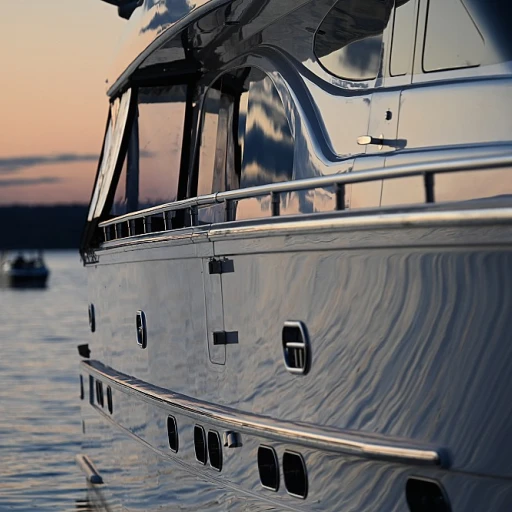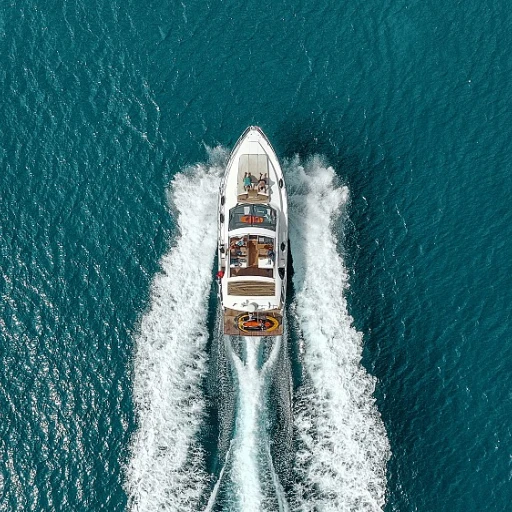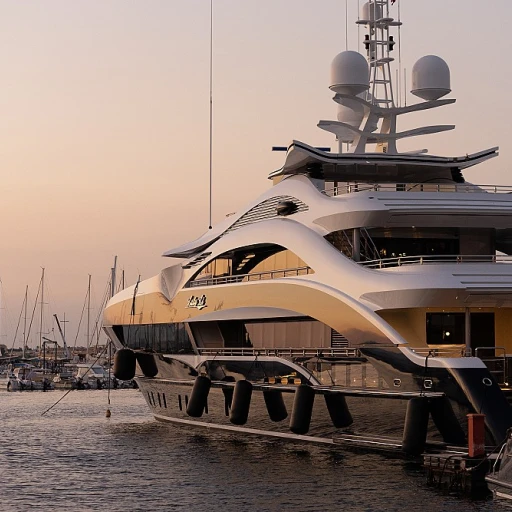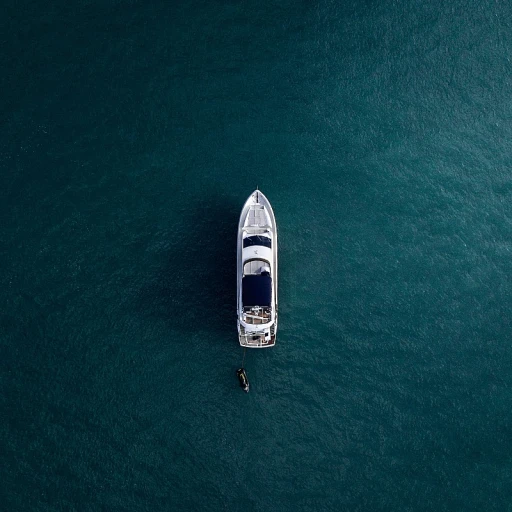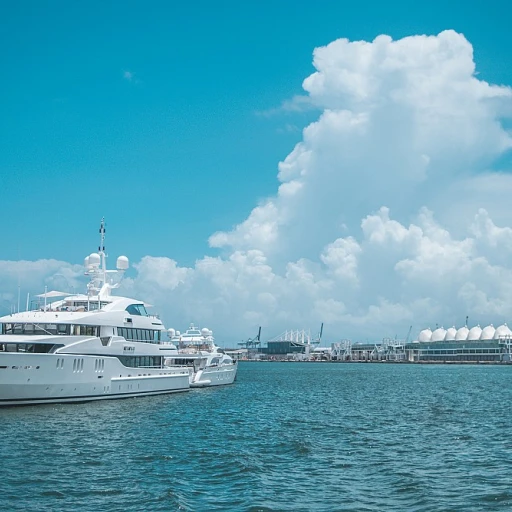Understanding Hook Sailing
Introduction to the Basics of Hook Sailing
Hook sailing is an intriguing aspect of yachting that combines technical skill with an artful approach to harnessing the wind and maneuvering through the waters. At its core, hook sailing involves the strategic use of various fittings like hooks and ropes, which are integral to managing sails and maintaining stability. Essential components such as the bow roller play a significant role in ensuring smooth sailing, particularly when reefing and handling sails.
The Role of Equipment and Gear
In hook sailing, equipment is paramount, encompassing a diverse array of parts and accessories. This includes items like stainless steel tools, carbine hooks, snap hooks, and snap shackles, all vital for secure and effective sail management. Deck fittings and hull deck integration are crucial for ensuring safety and performance. Sailors often rely on robust fittings laser cut for precision to optimize performance.
Essential Clothing and Accessories
Beyond hardware, clothing and accessories play a vital role in ensuring comfort and safety. Wearing the right gear, such as mens and womens wetsuits, sailing gloves, and buoyancy aids, is essential. These items not only protect against the elements but also enhance performance during competitive scenarios. Dry bags and dinghy covers are also vital for protecting personal items and equipment from moisture and damage.
Each element of hook sailing is interconnected, contributing to the overall experience and efficiency of sailing. In subsequent sections, we will delve deeper into the technical aspects, challenges, and developments in this captivating realm of yachting.
The Technical Aspects of Hook Sailing
The Intricacies of Hook Equipment and Fittings
Understanding the technical aspects of hook sailing is crucial for enthusiasts and professionals alike. At the core of this are the specialized equipment and fittings that support the practice.
Hook sailing heavily relies on the effectiveness and durability of its fittings, with a preference for materials such as stainless steel. This is primarily due to its resistance to the harsh maritime environment, offering greater longevity and reliability. Stainless steel fittings such as hooks, carbine hooks, snap shackles, and snap hooks are widely appreciated for their strength and safety features.
The hull of a hook sailing vessel is intricately designed to ensure optimal performance. Strong yet lightweight materials are chosen for the hull, allowing for better maneuverability and speed while minimizing drag. Recent advancements in hull design have focused on aerodynamics, catering to the demands of more competitive races and reducing energy consumption.
Deck fittings are another vital component; they must be strategically positioned and firmly secured to handle the high tension from ropes and rigging. Such fittings often undergo rigorous testing to meet safety standards and withstand the dynamic forces experienced during hook sailing.
The rigging systems in hook sailing employ ropes that are tailored for robust performance under tension. Ropes not only need to be durable, but they must also maintain their flexibility for ease of handling. Modern ropes incorporate advanced fibers and weaving techniques enhancing their resilience and efficacy, making them suitable for demanding conditions.
Moreover, the use of equipment like the laser dinghy is particularly popular among hook sailing individuals due to its responsiveness and agility. This innovative approach to dinghies involves a balance of weight and design, maximizing the potential of hook sailing techniques.
Ensuring optimal buoyancy and stability are buoyancy aids that provide crucial support in precarious sailing conditions. These aids must adhere to stringent industry standards, contributing to both safety and performance.
For those interested in embarking on hook sailing, proper gear such as wetsuits, sailing gloves, and dry bags are essential for comfort and safety in varying weather conditions. Wetsuits tailored for both men and women offer insulation against the cold, while gloves provide grip and protection, preventing rope burns or injury from fittings.
For an effortless guide on maintaining your yacht equipment, such as "How to Remove Boat Seat Posts," consider referring to detailed resources available
here. Researching comprehensive reviews on your sailing gear, from bags to hull parts, can also assist in making informed purchasing decisions, ensuring that the equipment not only meets your needs but also fits within your budgetary constraints.
Challenges Faced in Hook Sailing
Overcoming the Obstacles in Hook Sailing
Navigating the waters of hook sailing comes with its own unique set of challenges, testing even the most seasoned sailors. While the integration of various hooks and fittings, such as carbine hooks and snap shackles, offers practical utility, it simultaneously presents logistical hurdles. Sourcing the right fittings, like stainless steel or forged stainless options, is crucial to ensuring safety and performance on the hull. This demands a keen eye for quality and often, consultations of fittings laser reviews.
Stainless steel components, including deck fittings and hull deck adjustments, have become indispensable in hook sailing. However, not all steel hooks are created equal, and it’s vital for sailors to discern between varieties suited for different sailing conditions. The choice of ropes and fittings can make or break an adventure on a dinghy, impacting not just maneuverability but also safety during sudden weather changes.
Buoyancy aids and robust sailing attire such as wetsuits and sailing gloves cater directly to overcoming these maritime challenges. Both men's and women's ranges address different needs, from thermal protection to ease of movement, enhancing comfort and endurance during prolonged sails.
Storage solutions, like dry bags, are vital baggage for securing gear against unpredictable water sprays and movements. As sailers navigate these technical challenges, they're constantly engaged in a cycle of trial, error, and learning.
In competitive landscapes, the rigors of hook sailing escalate. Challenges amplify as competitors tweak their equipment—rudder tiller, hull adjustments, or deck fittings—to gain an edge. However, these often come with a hefty price tag. It's no surprise that sailors frequently consult the latest hook reviews to stay updated on innovations that promise to offer a competitive advantage.
Though skill is paramount, having the right equipment and clothing can significantly streamline the sailing experience. For insights on "the essentials of stylish attire for men on yachts" that complement both functionality and style, check the recommendations provided
here.
Hook Sailing in Competitive Yachting
Hook Sailing in the World of Competitive Yachting
Competing in the realm of hook sailing requires a unique blend of skill, precision, and strategy. This discipline combines the art of sailing with the technical demands introduced by the innovative use of hooks and related equipment. Competitive hook sailing not only tests the abilities of sailors but also challenges the durability and effectiveness of the gear employed, from stainless steel fittings and hull modifications to sailing clothing like wetsuits and gloves.
Competitive yachtsmen must meticulously evaluate their equipment, ensuring that the hooks, ropes, and deck fittings can withstand the rigorous demands of racing. The price and quality of items like snap hooks, forged stainless fittings, and laser components are crucial considerations, as the performance and safety of the vessel depend heavily on these parts.
Additionally, the importance of selecting the right attire can't be underestimated. Mens and womens wetsuits, sailing gloves, and buoyancy aids are essential for both comfort and safety during a race. Furthermore, proper storage solutions like dry bags and dinghy covers help maintain equipment integrity, offering protection against the elements and reducing shipping returns due to damage.
Crafting a competitive edge also involves understanding the optimal hull design and the precise use of a rudder tiller. The strategic placement of deck fittings and hull deck enhancements play a significant role in maximizing speed and maneuverability on the water.
The competition isn’t just on the water, though; it extends to reviews and recommendations of gear. Hook reviews and assessments of parts, fittings, and sailing accessories can influence decisions and drive advancements in technology and design approaches. The dynamic landscape of hook sailing in competitive yachting continues to push boundaries, encouraging innovation and excellence in the sport.
Training and Skill Development
The Art of Skillfully Navigating the Waters
Training and skill development in hook sailing is pivotal to mastering this unique and challenging yachting technique. Enthusiasts and seasoned sailors alike require a comprehensive understanding of the intricacies involved in handling ropes, hooks, and deck fittings. Whether you're adjusting sails or tinkering with hull parts, every element demands meticulous attention.
For those embarking on this journey, familiarity with fittings such as the laser fittings and the use of stainless steel hooks is fundamental. These elements not only ensure the yacht's performance but also bolster safety, especially during rough seas. Additionally, options such as the snap hook, carbine hook, and reefing hook are indispensable tools in your sailing arsenal.
A crucial aspect of training is hands-on experience, simulating real-world sailing conditions. This involves donning appropriate sailing clothing, such as wetsuits and sailing gloves, to get accustomed to the conditions naturally accompanying hook sailing. Understanding the sensitivity of steering with the rudder tiller and dealing with sudden shifts is something best learned out in the water.
Moreover, it's important to invest in quality equipment and gear. Reviews of hooks, sailing ropes, and buoyancy aids can provide valuable insights, ensuring you are geared with the best supplies available. Acquiring top-notch gear is just as crucial as mastering the skills, from laser fittings to stainless steel deck fittings.
Lastly, one should not overlook the benefits of joining a community or club that focuses on hook sailing, where exchanging experiences and lessons can accelerate the learning curve. Overall, consistent practice and up-to-date knowledge of technological advancements in sailing gear, such as hook eye designs or steel hook varieties, can significantly enhance a sailor’s approach to hook sailing.
Future Trends in Hook Sailing
Innovative Horizons in Hook Sailing
The future of hook sailing is an exciting one, with advancements expected to further enhance both performance and safety. As technology evolves, so do the materials and gear involved in this intricate art. High-quality materials like forged stainless and steel hooks provide not just durability but also a promise of longevity to sailors. The choice of fittings, such as laser fittings and snap shackles, become more refined, allowing for better adaptability during a race or casual sail.
Emerging trends indicate a shift towards more eco-friendly manufacturing techniques that do not compromise on the strength and resilience required. The production of sailing gloves, wetsuits, and dry bags increasingly embraces sustainable practices.
Additionally, the advancement in digital instrumentation aboard hook sailing vessels is gaining attention. These tools offer real-time data on speed, wind, and hull pressure, ensuring that sailors can make informed decisions right from their deck. The precision in laser technology complements traditional hardware such as carbine hooks and rope bags, making them more efficient to use.
With the competitive edge in mind, strategic approaches to materials like stainless steel deck fittings and hull decks are being rethought to reduce weight without sacrificing the integrity of the craft. Reviews on upgraded rudder tiller fittings and reefing hooks indicate promising developments in the arena of adaptive sailing.
In a fusion of tradition and innovation, hook sailing continues to captivate enthusiasts and professionals alike. Sailors need to stay attuned to these trends to remain competitive and enjoy the thrill of sailing for years to come.


